- Register
- Log in to Tune-In
- Wishlist (0)
-
Shopping cart
(0)
You have no items in your shopping cart.
Beatles News

The Beatles' "Penny Lane" is about a district, not a single lane. One member of the band lived there with his parents as a child.
The Beatles’ “Penny Lane” is about a district, not a single lane. Multiple members of The Beatles had connections to the real Penny Lane.
One member of the band lived there with his parents as a child.
The Beatles‘ “Penny Lane” made the titular district a household name across the world. Despite this, only one member of The Beatles lived in Penny Lane. Reportedly, he was not the member of the band who penned the song.
Source: Matthew Trzcinski/cheatsheet.com
details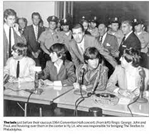
The Beatles wave to fans after disembarking a plane at Kennedy Airport in February 1964. Their Philadelphia show would take place that September. (United Press International/Library of Congress)
If you have a passing knowledge of pop music history, you know the Beatles landed in America in 1964.
Their February appearance on the Ed Sullivan show gets most of the attention, but their first American tour was actually in August and September of that year.
The ninth show of the tour was in Atlantic City, on Aug. 30 at Convention Hall. The tenth show was set for Philadelphia, on Sept. 2 at Philly’s old Convention Hall (also called the Civic Center).
But the days before the concert were tense in the city.
Source: Avi Wolfman-Arent/billypenn.com
details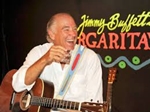
Paul McCartney paid tribute to Jimmy Buffett, who died on Friday at the age of 76. In a heartfelt remembrance, McCartney wrote of his late friend’s generosity, kindness, humor, and his songwriting.
McCartney recalled one particular holiday, where he forgot to pack his guitar, and Buffett came to the rescue.
“He said he would get me one of his, but I said, ‘I’m left-handed.’ So, Jimmy had his roadie restring one of his guitars which he loaned me for the duration of the holiday,” McCartney wrote. “He then followed this act of generosity by giving me my own beautiful left-handed guitar that had been made by one of his guitar-making pals. It’s a beautiful instrument, and every time I play it now it’ll remind me of what a great man Jimmy was.”
McCartney also spoke of his friend’s storytelling and his full embrace of life. “He had a most amazing lust for life and a beautiful sense of humour. When we swapped tales about the past his were so exotic and lush and involved sailing trips and surfing and so many exciting stories that it was hard for me to keep up with him,” he shared. “Right up to the last minute his eyes still twinkl details

The Beatles are, well, what can we really say that isn’t obvious? They are probably the biggest band ever. The Fab Four remain icons of music. Throughout their time together, the Beatles created a litany of indelible songs and massive hits. In fact, 20 different Beatles songs hit number one on the Billboard Hot 100 charts. And yet, that isn’t the end of the Beatles’ quality output. In fact, these are 30 great songs from the Fab Four that were never chart-toppers in the United States.
“All My Loving”
“Twist and Shout”
“And I Love Her”
Source: Chris Morgan
details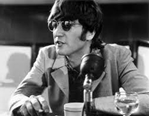
A Beatles engineer said nothing ever got past John Lennon. He noticed a minor change to a Beatles song because his singing was missing.
According to a Beatles audio engineer, John Lennon paid close attention when listening back to songs. Even though he derided some of The Beatles’ music after the band broke up, he was careful in the studio. While listening back to “Yellow Submarine,” Lennon realized that someone had made a mistake. His voice was missing from a part where it was meant to appear.
The Beatles spent a good deal of time messing around in the studio while recording “Yellow Submarine.” Still, Lennon tried to keep them focused. He put a great deal of thought into the song and made several alterations. Not all of these made it into the song’s final version, though.
“At a certain point, John decided that the third verse needed some spicing up, so he dashed into the studio and began answering each of Ringo’s sung lines in a silly voice that I further altered to make it sound like he was talking over a ship’s megaphone,” audio engineer Geoff Emerick wrote in his book Here, There and Everywhere: My Life Recording the Music of the Beatles. &l details
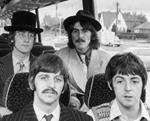
Alfred Hitchcock's 'Psycho' inspired The Beatles' "Eleanor Rigby" lyrically and musically. Despite this, there are huge differences between the two.
Paul McCartney said The Beatles‘ “Eleanor Rigby” has a “madcap connection” to a character from Alfred Hitchcock’s Psycho. Despite this, the Psycho character doesn’t actually have much in common with the protagonist of “Eleanor Rigby.” Notably, John Lennon said the hit was inspired by the music of a famous composer.
In a 2021 article from The New Yorker, Paul discussed the origins of The Beatles’ “Eleanor Rigby.” “It did feel like a breakthrough for me lyrically — more of a serious song,” he recalled. “[Producer] George Martin had introduced me to the string-quartet idea through ‘Yesterday.’ I’d resisted the idea at first, but when it worked, I fell in love with it. So I ended up writing ‘Eleanor Rigby’ with a string component in mind. When I took the song to George, I said that, for accompaniment, I wanted a series of E-minor chord stabs. In fact, the whole song is really only two chords: C major and E minor.
Source: Matthew Trz details

Together, they’re one-half of the Fab Four. The drummer and the cerebral, even psychedelic songwriter. They’re Ringo Starr and John Lennon and for the rest of history they two will be associated with one another thanks to their time together with the Beatles.
But did you know that they two worked on songs together outside the Mop Tops? Here, we dive into three songs that Lennon helped write for Starr’s solo work.
1. “I’m the Greatest”
Written by John Lennon
Written by Lennon, this song opened Starr’s self-titled 1973 record, Ringo. The song also marks the only time Ringo, Lennon and former Beatle George Harrison got together to record post-Beatles’ breakup. It would seem that Paul McCartney wasn’t invited to that one. The song, inspired by boxer Muhammad Ali who would often say he was the greatest in the ring, was written first by Lennon for Lennon but then was edited to fit Starr. On the carnival of a song, Starr sings....
Source: Jacob Uitti/americansongwriter.com
details
Paul McCartney Reportedly Sang to Jimmy Buffet Before The End.
As the world mourns the passing of Jimmy Buffett, one tribute feels particularly bittersweet. Buffet was 76 when he succumbed to skin cancer on September 2, 2023. Shortly after his passing, the legendary Paul McCartney posted a heartfelt tribute to the Margaritaville legend, saying: “I’ve known Jimmy for some time and found him to be one of the kindest and most generous people.”
McCartney also fondly recalled the time that Buffett had a guitar re-strung for McCartney, and then, gifted Sir Pual a left-handed guitar, specially made for him. “It’s a beautiful instrument, and every time I play it now it’ll remind me of what a great man Jimmy was.”
But, on top of all that, as the world mourns, and we try to figure out which Jimmy Buffett album really was the best one, there’s one more sweet detail about Sir Paul and Mr. Magarita. According to the New York Post: “Paul McCartney reportedly visited the Grammy nominee at his home within the last week to sing to him.”
Source: fatherly.com

Paul McCartney fans are on a mission to find his favorite guitar and they are asking for the help of Beatles fans.
The Lost Bass Project is picking up steam after launching to reunite The Beatles musician with one of his most treasured instruments — the Höfner 500/1 electric bass he used during the 1960s. The team is led by former Höfner GmbH marketing manager Nick Wass, former BBC journalist Scott Jones and television producer Naomi Jones.
Finding the instrument will be no easy task. McCartney’s bass has not been seen with its original owner since late January 1969, when The Beatles were in London recording the Get Back and Let It Be sessions.
“Welcome to The Lost Bass project and the greatest mystery in rock and roll. This is the search for the most important bass in history – Paul McCartney’s original Höfner,” the group's site reads. The project launched on Saturday, reports CNN.
The Lost Bass Project is counting loyal Beatles fans to “follow the trail” and “help trace the bass.”
Source: Angel Saunders/people.com
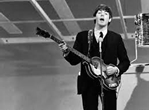
A guitar expert and two journalists have launched a global hunt for a missing bass guitar owned by Paul McCartney, bidding to solve what they brand “the greatest mystery in rock and roll.”
The three lifelong Beatles fans are searching for McCartney’s original Höfner bass — last seen in London in 1969 — in order to reunite the instrument with the former Fab Four frontman.
McCartney played the instrument throughout the 1960s, including at Hamburg, Germany’s Top Ten Club, at the Cavern Club in Liverpool, England and on early Beatles recordings at London’s Abbey Road studios.
“This is the search for the most important bass in history — Paul McCartney’s original Höfner,” the search party says on a website — thelostbass.com — newly-created for the endeavor.
“This is the bass you hear on ‘Love Me Do,’ ‘She Loves You’ and ‘Twist and Shout.’ The bass that powered Beatlemania — and shaped the sound of the modern world.”
Source: sandhillsexpress.com

An archive of material from John Lennon and Yoko Ono’s 1969 peace protest is among the items to be sold this month at one of the most expensive Beatles auctions ever held.
Memorabilia will go under an online hammer with an upper estimated value of $8m (£6.3m). It includes a section of TV set wall that formed the backdrop to the Beatles’ breakthrough Ed Sullivan show appearance, clothes, speakers, signed contracts and a curious birthday card from George Harrison to his caretaker signed “Adolf Schinkengruber”.
The auction will be hosted by GottaHaveRockandRoll auctions in New York.
The bed-in material not only provides insights into Lennon and Ono’s frame of mind but it also tells the fascinating story of an enterprising teenage fan who blagged her way into the bedroom and secured an interview.
John Lennon and Yoko Ono married in Gibraltar in March 1969, a place chosen, he said, because it was “quiet, British and friendly”. After a few days in Paris they arrived in Amsterdam in Lennon’s white Rolls Royce to begin their bed-in: a week-long peace protest staged against the backdrop of the Vietnam war. It became a huge media event with journalists details
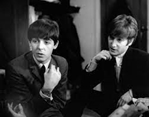
Paul McCartney wanted to write a song for another artist to boost The Beatles' career. He shared why he didn't think the song was very good.
Paul McCartney wrote many hit songs for The Beatles but also penned tunes that he intended to give out to other artists. These occasionally made their way onto Beatles records, even if McCartney and John Lennon wrote them with other musicians in mind. One such song was “Misery,” a ballad intended for musician Helen Shapiro. McCartney shared why writing the song was hacky of them.
Early in their years as a band, McCartney and Lennon wrote together and wanted to do whatever they could to get their songs play time. This included writing songs for other artists. The Beatles were touring with Shapiro, and they felt she could boost their career by singing a song they wrote. So, they penned “Misery” with her in mind.
“We wrote it for Helen Shapiro because we were going on tour with her and, being young lads with an eye for an opportunity, we thought, well, even if she does it on a B side, this’ll be very good for our songwriting,” McCartney said in the book Paul McCartney: Many Years From Now by Barry Miles.
Source: Emma Mc details

This week, Paul McCartney and Ringo Starr earned a new Billboard chart success together, marking a milestone as neither had previously reached on this particular ranking. The duo debuted a rendition of their iconic song “Let It Be” on a specific chart, signaling the potential for significant accomplishments to come for the track.
Their rendition of "Let It Be" debuts on this week’s Hot Trending Songs chart, entering the list at No. 3. This chart highlights the tracks generating the most conversation on Twitter, offering a snapshot of what is currently resonating with a younger, digitally engaged audience. Despite the chart often being dominated by pop stars and K-pop acts, McCartney and Starr's presence is indicative of the widespread interest in their reimagined version of the song.
Dolly Parton reworked "Let It Be" for her upcoming rock album Rockstar. The track features not only McCartney and Starr but also iconic musicians Mick Fleetwood and Peter Frampton.
Source: Hugh McIntyre/forbes.com
details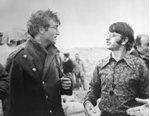
John Lennon wrote a Beatles song that he intended to give to Ringo Starr. A Beatles engineer said this was a shame, as Lennon sang it beautifully.
John Lennon wrote the sweeping lullaby “Good Night” for the White Album, but he didn’t sing the song. Typically, he would sing the songs he wrote, but he passed this one off to Ringo Starr. According to Beatles engineer Geoff Emerick, this was a shame. He explained that Lennon sang a beautiful demo of the song. He didn’t find Starr’s version of the song nearly as impressive.
Work on the White Album was, for the most part, a nightmare for everyone involved. Band relations were frosty when they weren’t outright hostile, and everyone in the studio was exhausted and fed up. Therefore, the introduction of Lennon’s “Good Night” came as a pleasant surprise.
“[J]ohn surprised us all with the unveiling of his lush ballad ‘Good Night,'” Emerick wrote in his book Here, There and Everywhere: My Life Recording the Music of the Beatles. “Like ‘Across the Universe,’ the song showed his softer side, a stark contrast to the screamer he had belted out just the night before. It ably demonst details

The Everly Brothers' producer thought Paul McCartney would be willing to give the band a tune for a very specific reason.
Paul McCartney wrote a hit song by The Everly Brothers. The band’s producer was nervous to talk to Paul. Despite this, he thought Paul would be willing to give a tune to The Everly Brothers for a very specific reason.
Phil and Don Everly are the two members of The Everly Brothers. A 1986 Rolling Stone article explained why Paul gave them a song. After a long hiatus, The Everly Brothers planned to release a comeback album with producer Dave Edmunds. Edmunds knew Paul was a fan of the duo, so he asked the “Silly Love Songs” singer to give The Everly Brothers a tune.
Don said this was no easy task. “Dave said it was the hardest phone call he ever made, because McCartney is always being asked for something,” he revealed. “Paul said if he could come up with anything, he’d give a call. Dave forgot about it, but about six weeks later, the phone rang, and it was McCartney. He said, ‘I think I’ve got one.'” The tune was called “On the Wings of a Nightingale.”
Source: Matthew Trzcinski/cheatsheet.com
